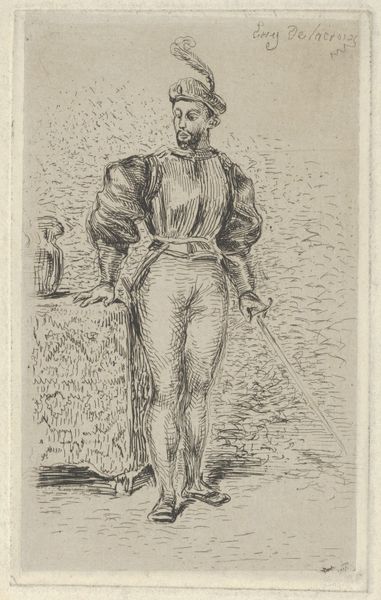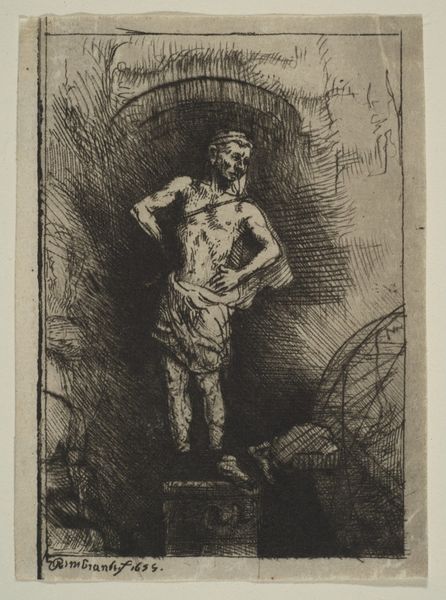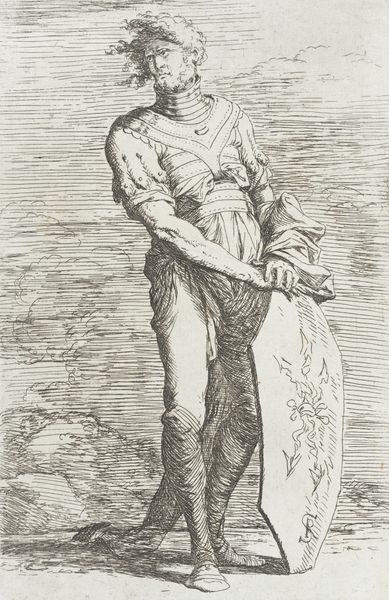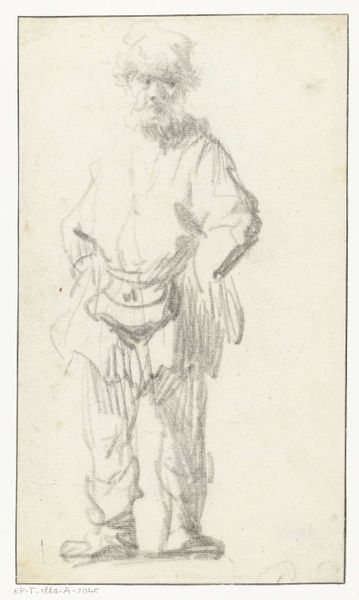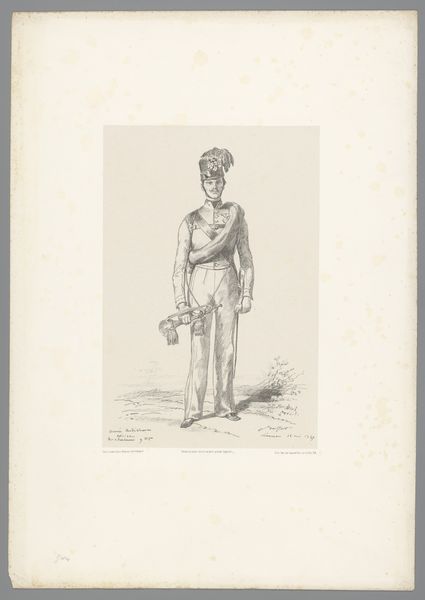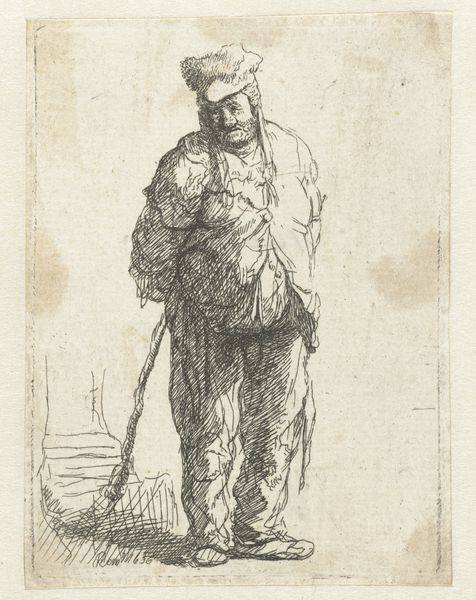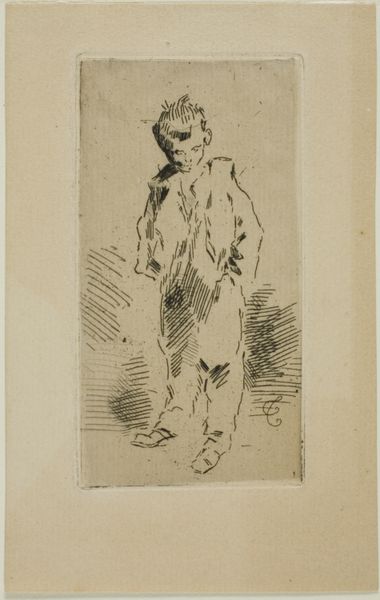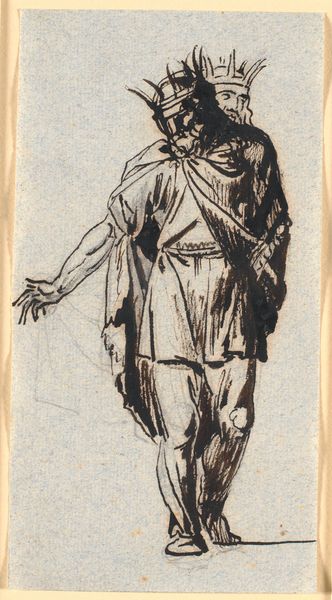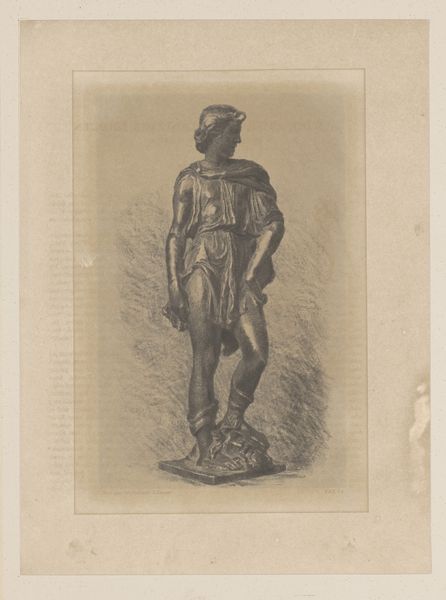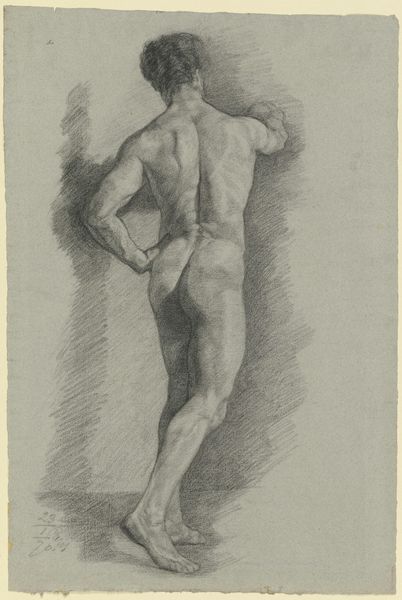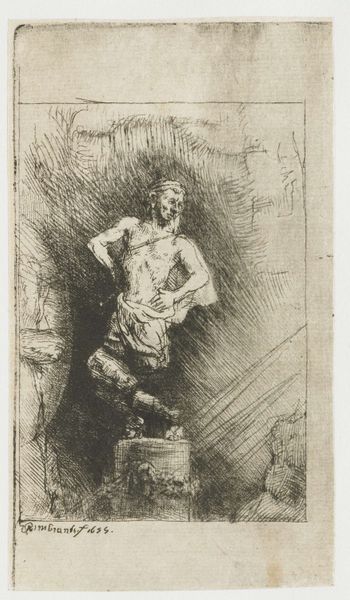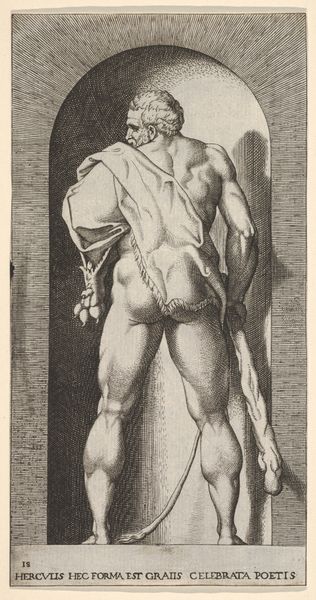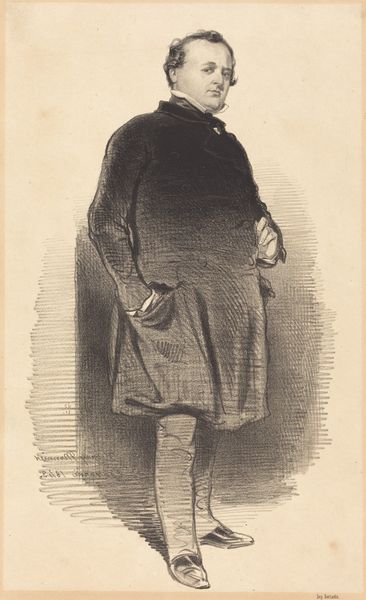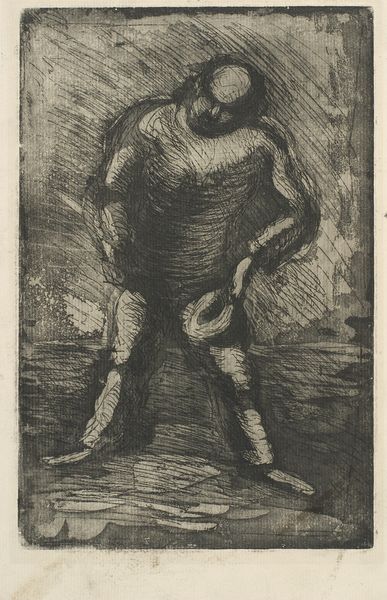
drawing, print, etching
#
portrait
#
drawing
# print
#
etching
#
figuration
#
romanticism
#
line
#
history-painting
Dimensions: Sheet: 9 3/16 x 8 1/16 in. (23.4 x 20.5 cm) Plate: 4 5/16 x 2 3/4 in. (11 x 7 cm)
Copyright: Public Domain
Curator: I'm immediately drawn to the meticulous line work here. There's a real dedication to detail in rendering both the figure and the textures of his garb. Editor: Indeed. This is Eugène Delacroix’s etching, "Man at Arms," dating between 1800 and 1863. Delacroix, a key figure of the Romantic movement, consistently engaged with historical themes, particularly those allowing for an exploration of emotional intensity and the drama of human conflict. Considering its title in French, “Un homme d’armes du temps de Francois Ier,” it transports us back to the era of King Francis I, encapsulating the visual culture and martial identity of the time. Curator: It's the man's stance that catches my eye—the slightly melancholic posture, contrasting with the firm grip on his sword. There’s a certain languor there that's very affecting, an interesting take on masculinity of the era. Semiotically, the sword represents not only strength and readiness but also a certain vulnerability. Editor: His garb speaks volumes, reflecting not just military attire but also sartorial trends influenced by noble styles. This wasn’t merely protective gear; it was an identity marker, underscoring both power and social position. It also begs us to consider issues around class and power in a time rife with shifting sociopolitical dynamics. Curator: I am not surprised it embodies historical painting qualities. Considering his historical focus and given his deep engagement with masters of the Renaissance, particularly his understanding of their anatomical correctness in relation to idealized forms, what kind of effect do you think the artist sought to achieve by situating his character indoors, not on the battlefield? Editor: By grounding this “man at arms” in such an interior, almost domestic space, Delacroix forces a close-up look at issues such as the psychological costs of leadership in periods defined by continual instability and martial tension. Curator: Delacroix's ability to distill that tension within such tight, formally rigorous etching work is indeed striking. It adds layers of context about societal constructs, gender roles, and social upheaval that is palpable still. Editor: It certainly resonates even now, reflecting our endless human conflict throughout history.
Comments
No comments
Be the first to comment and join the conversation on the ultimate creative platform.
